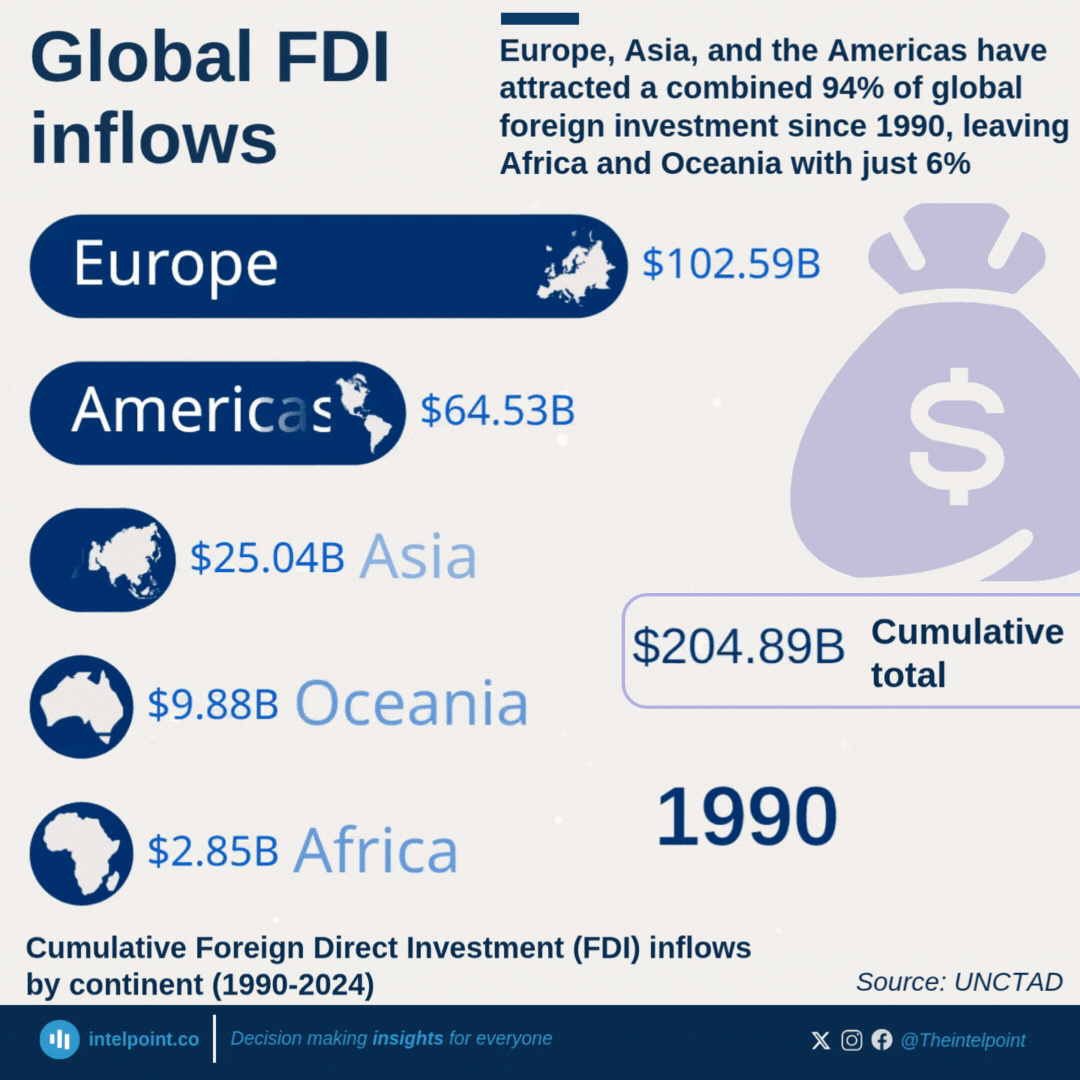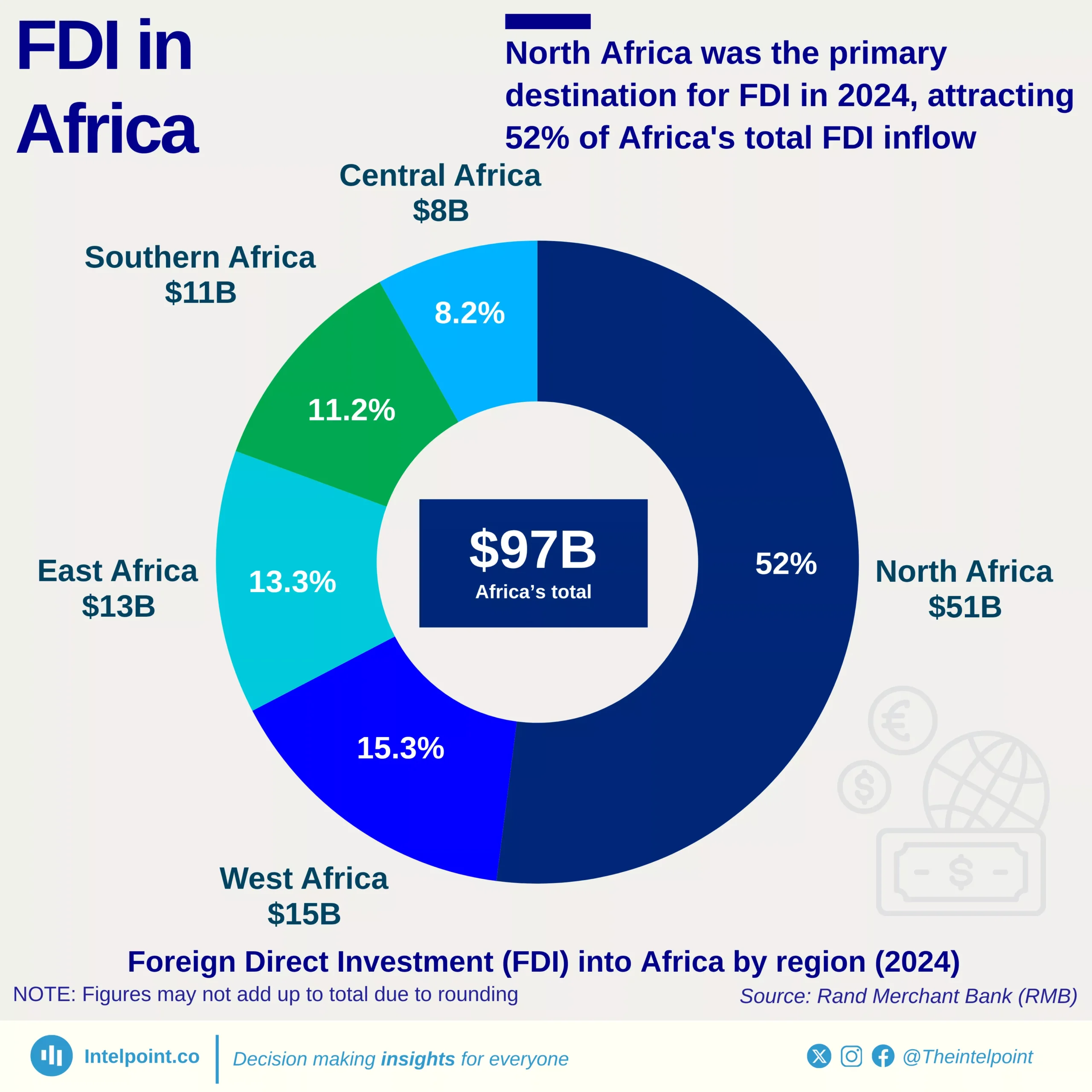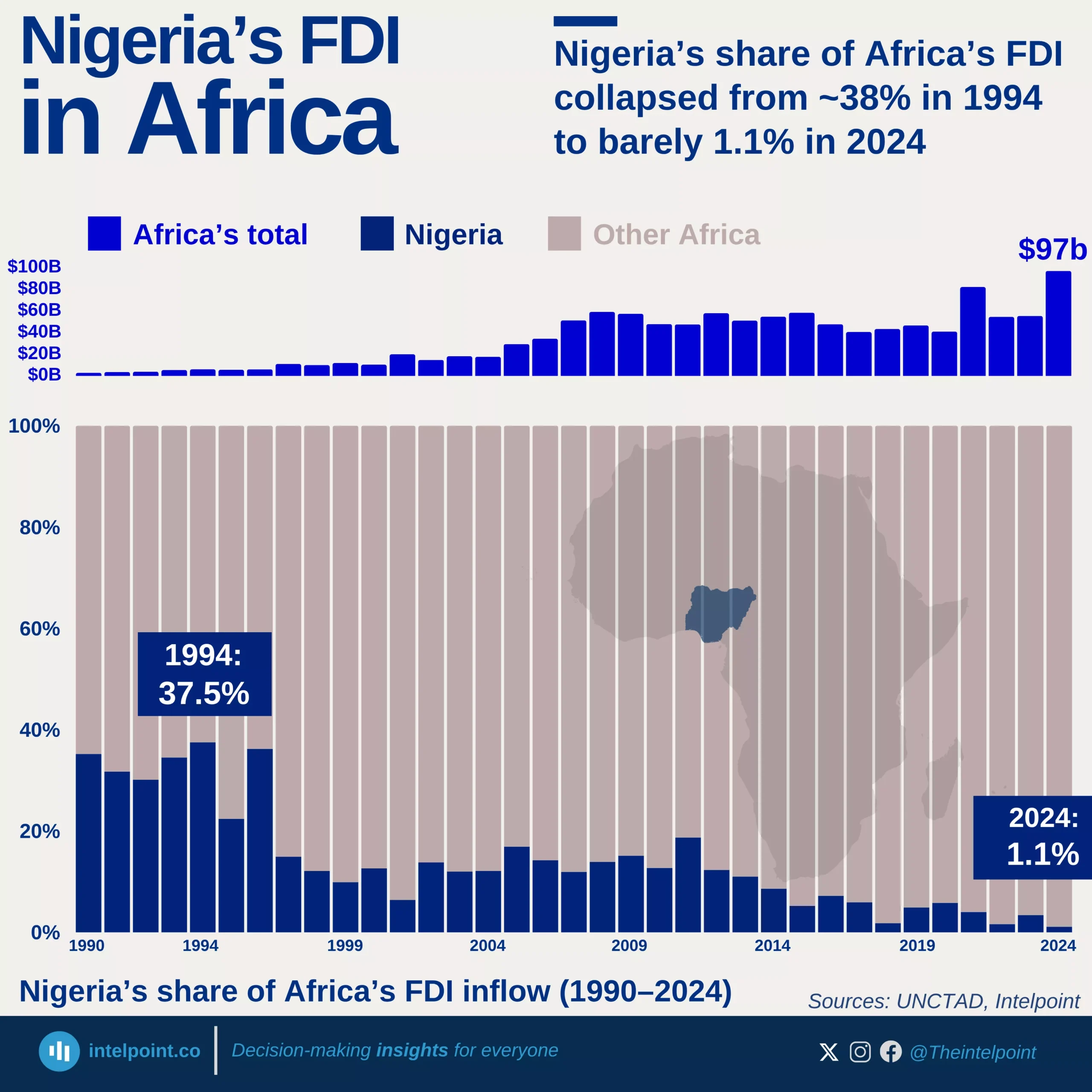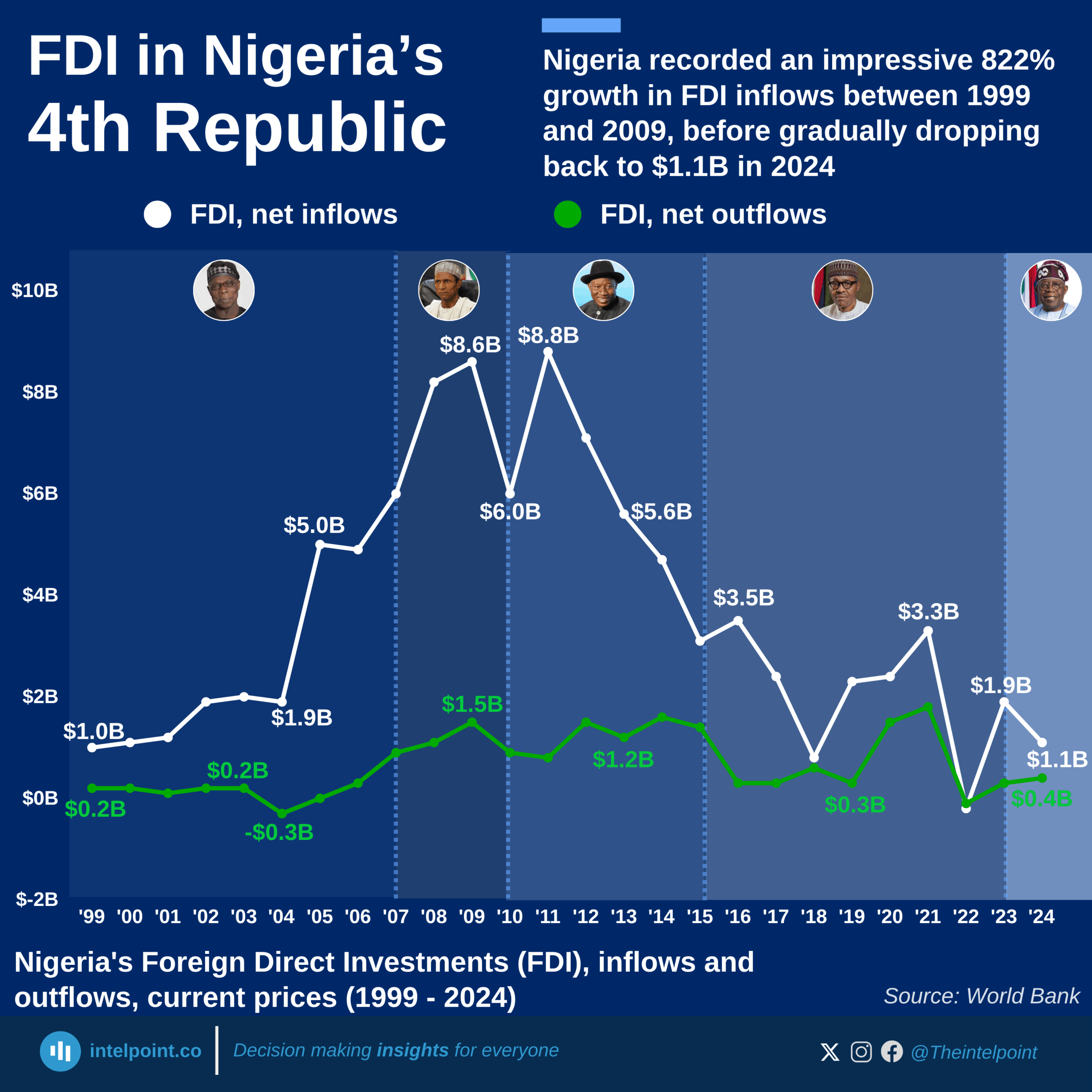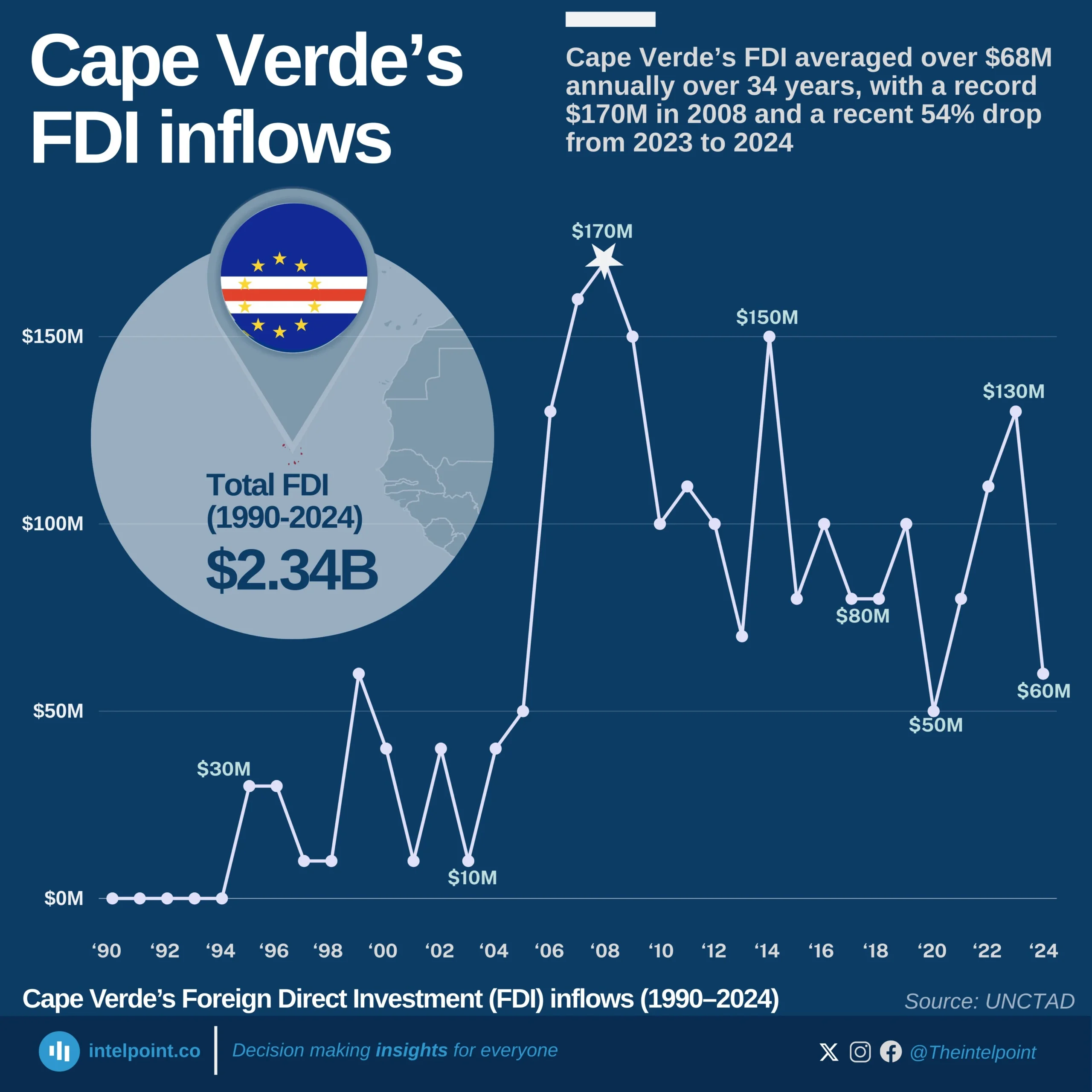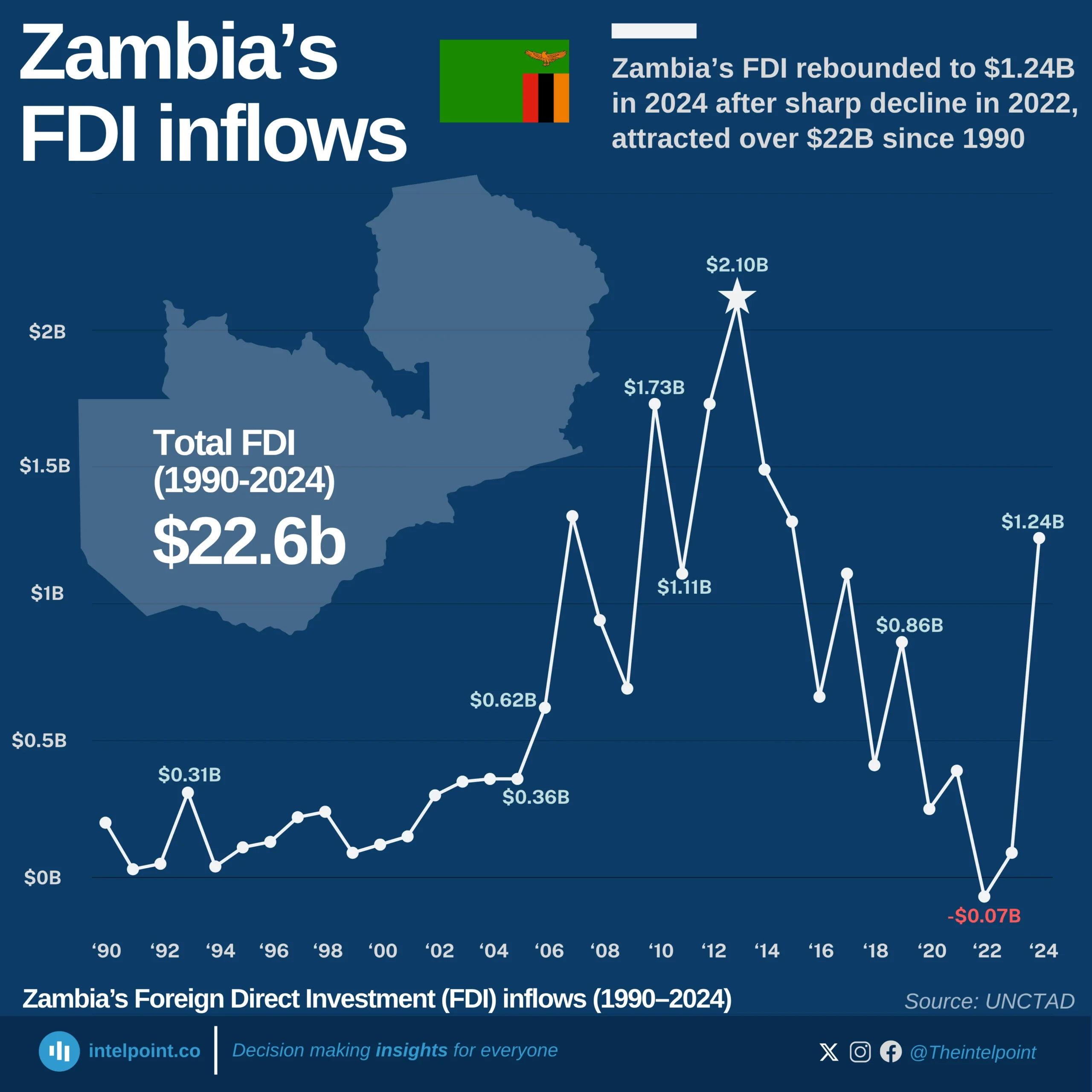Côte d'Ivoire’s foreign direct investment (FDI) journey from 1990 to 2024 reveals a slow and steady rise followed by an impressive surge in recent years. From negligible flows like $0.05 billion in 1990 and $0.02 billion in 1991, the country’s FDI remained modest through the 1990s and 2000s, rarely exceeding $0.5 billion annually. This pattern reflects decades of political instability, economic volatility, and underdeveloped infrastructure, all of which traditionally hindered investor interest.
However, starting around 2017, the tide began to turn. A series of structural reforms, improvements in governance, and a stronger focus on private sector-led growth attracted new international capital. By 2021, FDI leapt to $1.39 billion, and in just three years, the country tripled that figure, reaching $3.80 billion in 2024. This steep rise positioned Côte d'Ivoire as one of the most rapidly emerging investment destinations in West Africa, a testament to its growing appeal in sectors like energy, agriculture, construction, and tech infrastructure.
